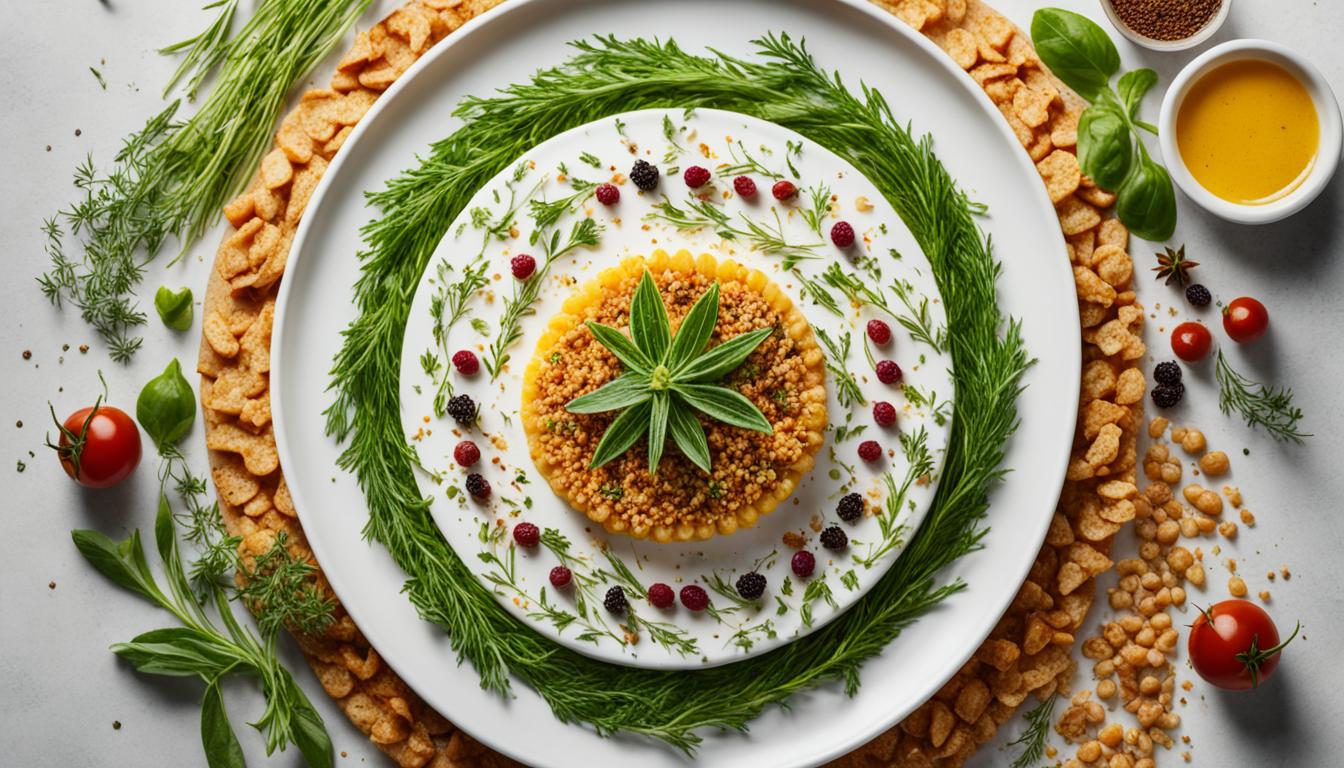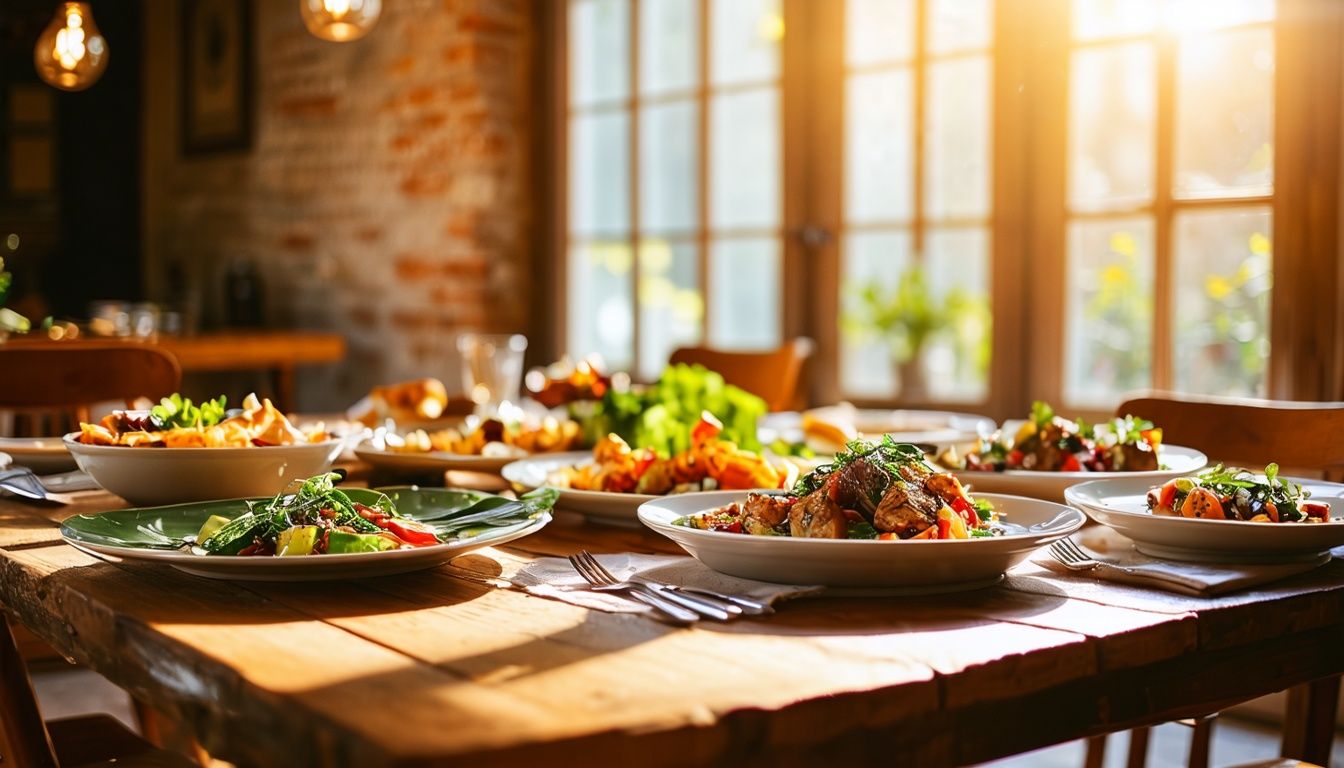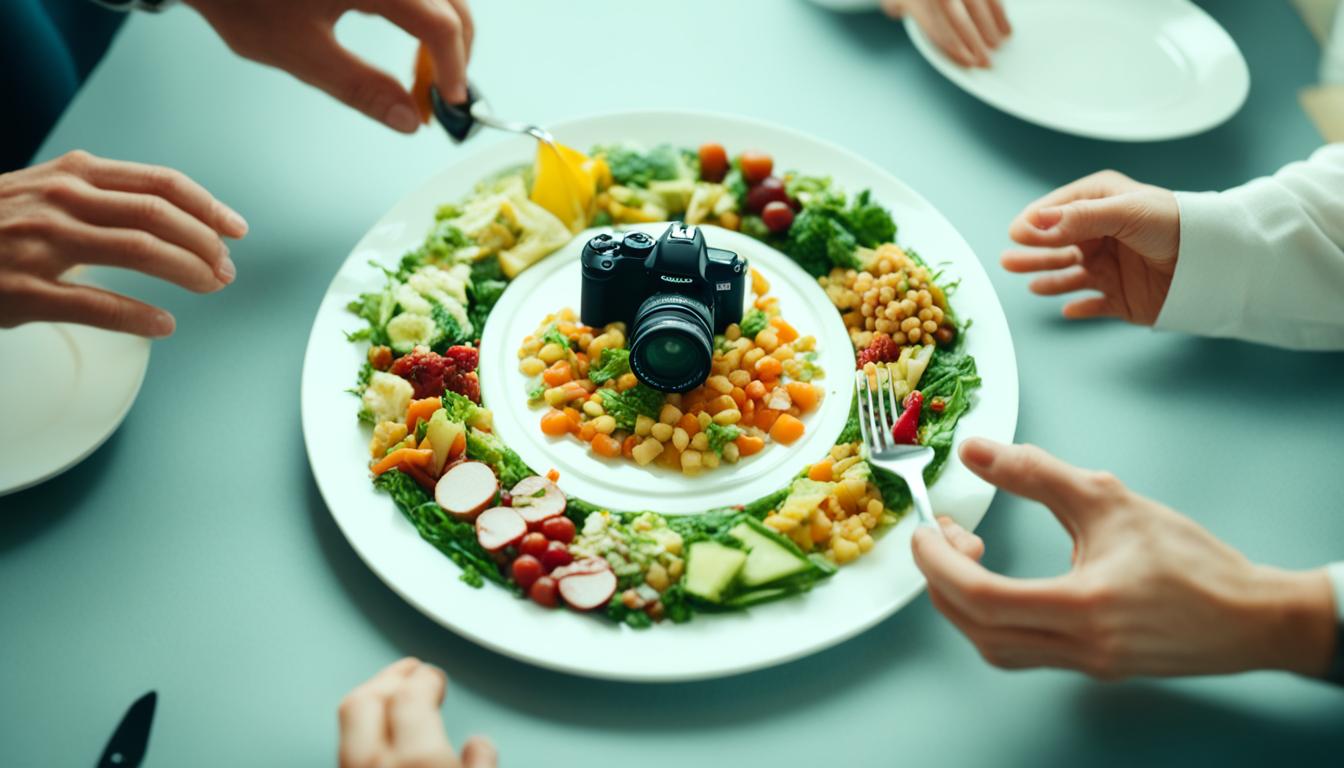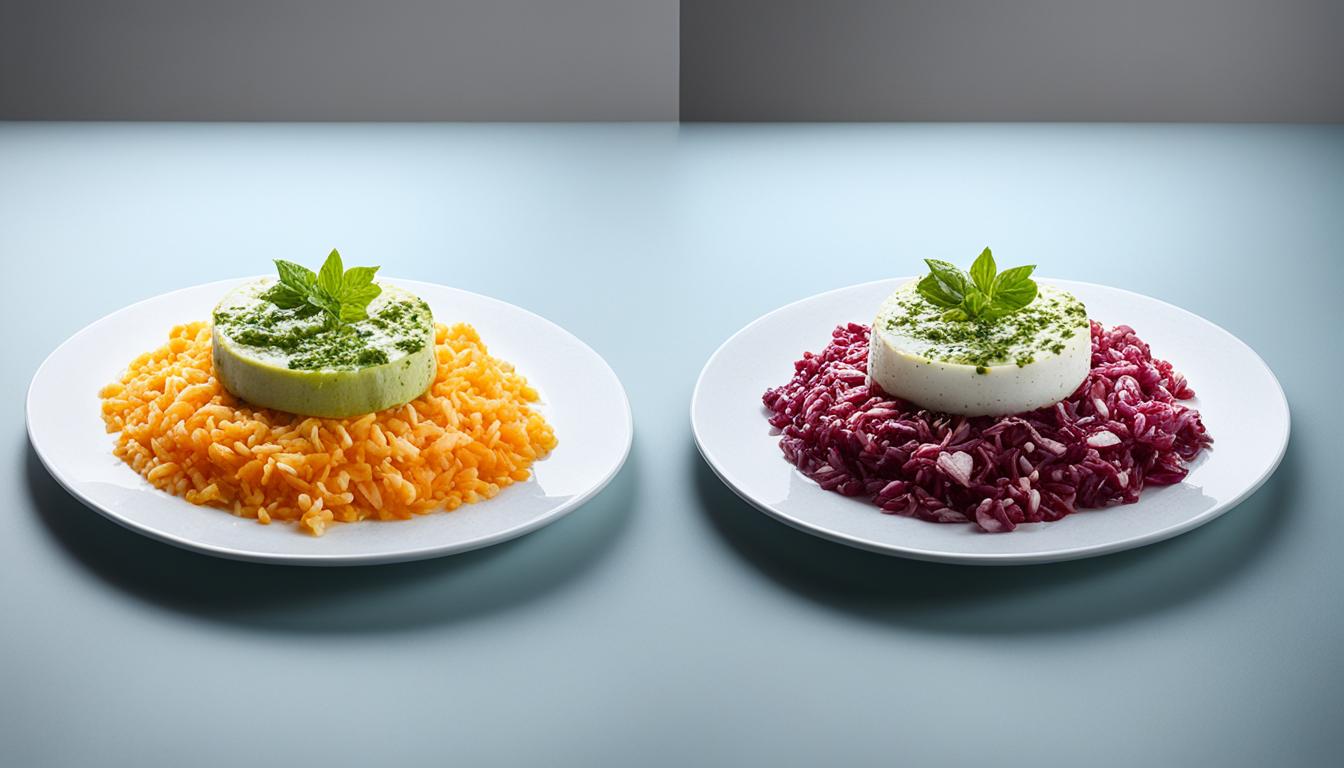When it comes to food photography, capturing texture and detail is key to creating visually appealing images that make viewers’ mouths water. In this article, we will share valuable tips and techniques for capturing texture and detail in food photography. Whether you’re an aspiring food photographer or a seasoned pro, these tips will help you take your food photography skills to the next level.
Food photography is not just about capturing the flavors and colors of the dishes – it’s also about showcasing the textures and details that make the food enticing. From crispy crusts to creamy fillings, each element adds to the overall sensory experience. By focusing on these aspects, you can transport the viewer into a world of flavors and textures.
One of the ways to capture texture and detail in food photography is by incorporating patterns and textures into your compositions. These can be found in the food itself or in the props and backgrounds you use. By paying attention to these elements, you can add depth and visual interest to your images.
Another technique is using macro photography for close-ups. A macro lens allows you to capture intricate details and highlight the texture and pattern of the food. This approach can create visually appealing compositions and draw the viewer’s attention to the smallest details that might have been overlooked otherwise.
Lighting and composition are also crucial in enhancing texture and detail in food photography. By playing with shadows, contrast, and composition techniques like the rule of thirds, you can bring out the textures and details in your images, creating a visually balanced and appealing shot.
So, whether you’re photographing a plate of beautifully arranged sushi or a slice of chocolate cake, remember to focus on capturing the texture and detail that will make your food photography stand out from the rest.
Key Takeaways:
- Capturing texture and detail is essential in food photography to create visually appealing images.
- Incorporate patterns and textures in your compositions to add depth and interest.
- Use macro photography for close-ups to highlight intricate details.
- Enhance texture and detail through lighting and composition techniques.
- Focus on showcasing the textures and details that make the food enticing to the viewer.
Incorporating Patterns and Textures
Patterns and textures play a crucial role in food photography, adding depth and visual interest to your images. The world of food is filled with abundant patterns and textures, from the crusty texture of bread to the intricate patterns created by rice or berries. Learning to notice and incorporate these patterns and textures can elevate your food photography to new heights.
When it comes to patterns in food photography, there are various types to explore. Macro patterns, for example, showcase the intricate details and repetitive elements within a food subject. You can also experiment with regimental patterns versus random repetition, creating a sense of uniformity or a playful arrangement of elements. Patterns made up of different objects can add visual interest and create a focal point in your composition.
Breaking the monotony of patterns can create intrigue and capture the viewer’s attention. By introducing contrasting elements, such as a vibrant fruit against a neutral background or a textured ingredient against a smooth surface, you can create captivating juxtapositions that break the visual flow. These unexpected combinations not only add excitement but also add depth and richness to your images.
Exploring the different patterns and textures in food photography allows you to unleash your creativity and produce visually appealing images. Experiment with different compositions, placement of elements, and lighting techniques to highlight the patterns and textures in your food subjects. By incorporating these elements, you can elevate your food photography and create images that truly captivate.
“Patterns and textures in food photography can transform ordinary dishes into visually captivating masterpieces, adding an extra layer of richness and intrigue. Incorporating these elements allows us to break away from the monotony and create images that both delight the eye and stir the senses.”
Types of Pattern in Food Photography:
- Macro patterns: Showcasing intricate details and repetitive elements.
- Regimental patterns vs. random repetition: Creating uniformity or playful arrangements.
- Patterns made up of different objects: Adding visual interest and focal points.
Breaking the Monotony:
Breaking the monotony of patterns can create intrigue and visual appeal in your food photography. By introducing contrasting elements, you can create captivating juxtapositions that add depth and richness to your images.
| Pattern Type | Description |
|---|---|
| Macro patterns | Showcasing intricate details and repetitive elements. |
| Regimental patterns vs. random repetition | Creating uniformity or playfulness in arrangements. |
| Patterns made up of different objects | Adding visual interest and creating focal points. |
Using Macro Photography for Close-Ups
In food photography, capturing intricate details is key to creating visually stunning images that make the viewer crave the food. One technique that allows us to achieve this is macro photography. By utilizing a macro lens, we can get up close and personal with our food subjects, emphasizing the patterns and textures that make them unique.
With macro photography, we can capture the tiniest details that would otherwise go unnoticed. Each crumb, each sprinkle, and each drip of sauce becomes a work of art when magnified through the lens. The level of detail achieved with macro photography adds depth and interest to our compositions, elevating the overall aesthetic of our food photography.
When using a macro lens, it’s crucial to pay attention to the focus. By focusing on specific areas of the food, such as a sprinkle of sugar or the delicate veins of a leafy green vegetable, we can draw the viewer’s eye to those intricate details. This selective focus creates a sense of depth and dimension, making the viewer feel as though they can reach out and touch the food.
To further emphasize pattern and texture in our food photography, we can experiment with different angles and compositions. Shooting from a top-down perspective allows us to showcase the intricate details from above, while a side view can highlight the depth and textures of stacked ingredients.
One effective technique is to incorporate props that enhance the texture and pattern of the food. For example, pairing a crusty baguette with a rustic wooden cutting board can create an appealing contrast of textures. Using linens or napkins with interesting patterns can also add visual interest to the composition.
To inspire you, take a look at the image below, captured using macro photography:

“Macro photography allows us to capture the intricate details and emphasize the pattern and texture in our food subjects. It adds a whole new dimension to our images, making them visually captivating and engaging.”
Benefits of Using Macro Photography for Food
| Benefits | Explanation |
|---|---|
| Emphasizes pattern and texture | Macro photography brings out the intricate details and textures in the food, making it visually appealing. |
| Creates visually captivating compositions | The level of detail achieved with macro photography adds depth and interest to food images, making them stand out. |
| Highlights the uniqueness of the food | By magnifying the details, macro photography allows us to showcase the individual characteristics of each food item. |
| Draws the viewer in | The intricate details and textures captured through macro photography make the viewer feel connected to the food, sparking their curiosity and appetite. |
With macro photography, we have a powerful tool at our disposal to capture the beauty and intricacy of food. It enables us to create visually appealing images that emphasize pattern and texture, drawing the viewer in and making them crave the food we photograph. By exploring different angles, compositions, and props, we can elevate our food photography to a whole new level.
Enhancing Details Through Lighting and Composition
In food photography, lighting and composition are key factors in bringing out the texture and detail of your food subjects. By employing the right lighting techniques and utilizing composition techniques, you can create visually appealing images that highlight the intricate details of the food. Let’s explore how lighting and composition can enhance texture and detail in your food photography.
Lighting Techniques
Proper lighting is crucial for capturing texture and detail in food photography. Here are some lighting techniques that can help you achieve the desired effect:
- Soft lighting: Soft, diffused lighting helps minimize harsh shadows and brings out the subtle texture and details of the food.
- Side lighting: Positioning the light source at the side creates interesting shadows that define texture and add depth to the image.
- Backlighting: Backlighting the food can enhance its texture by creating a beautiful halo effect and highlighting the contours of the subjects.
Experiment with different lighting setups and find the one that best complements the texture and detail you want to showcase in your photographs.
Composition Techniques
Composition plays a vital role in accentuating the texture and detail in your food photography. Here are some composition techniques to consider:
- Rule of Thirds: Divide your image into thirds both horizontally and vertically. Positioning key elements of the food along these lines or at the intersections creates a visually pleasing composition.
- Rule of Odds: Grouping food items in odd numbers can create a sense of balance and visual interest. This technique helps draw attention to the texture and detail of each subject.
Additionally, playing with shadows and contrast can enhance the patterns and textures in your compositions. By strategically incorporating shadows and contrasting elements, you can create depth and visual intrigue in your images.
Remember, lighting and composition are powerful tools that can enhance the texture and detail of your food photography. By mastering these techniques and experimenting with different approaches, you can capture compelling images that captivate the viewer’s senses.
| Technique | Description |
|---|---|
| Soft lighting | Soft, diffused lighting minimizes harsh shadows and accentuates subtle texture and details in the food. |
| Side lighting | Positioning the light source at the side creates interesting shadows that define texture and add depth to the image. |
| Backlighting | Backlighting the food creates a beautiful halo effect and highlights the contours, enhancing texture and detail. |
| Rule of Thirds | A composition technique that divides the image into thirds, positioning key elements along the lines or intersections for a visually pleasing composition. |
| Rule of Odds | Grouping food items in odd numbers creates a sense of balance and visual interest, drawing attention to the texture and detail of each subject. |
Conclusion
Mastering the art of capturing texture and detail in food photography is a game-changer. By incorporating patterns and textures, utilizing macro photography, and enhancing details through lighting and composition, you can create visually stunning and lifelike images that showcase the beauty and intricacy of the food.
When it comes to capturing texture and detail, experimentation is key. Try different techniques and find your own unique style that resonates with you. Whether it’s highlighting the delicate ridges of a strawberry or the intricate patterns on the crust of a freshly baked bread, pay attention to every detail and bring it to life through your lens.
As you practice and refine your skills, remember that professional food photography goes beyond simply documenting the dish. It is about creating visually appealing images that captivate your audience and make their mouths water. So, don’t be afraid to play with shadows, contrast, and composition to enhance the texture and detail even further.
Capturing texture and detail in food photography requires patience, attention to detail, and a passion for the art. With dedication, creativity, and a keen eye, you can create irresistible and captivating images that leave a lasting impression. So grab your camera, focus on the details, and let your food photography shine!
FAQ
What are some tips for capturing texture and detail in food photography?
Incorporate patterns and textures, use macro photography for close-ups, and enhance details through lighting and composition.
How can I incorporate patterns and textures into my food photography?
Notice and incorporate patterns and textures present in the food, such as the texture of bread or the patterns created by rice or berries. Experiment with different types of patterns, including macro patterns, regimental patterns vs. random repetition, and patterns made up of different objects. Breaking the monotony of patterns can also add intrigue to your images.
What is macro photography, and how can it help me capture detail in my food photography?
Macro photography allows you to capture intricate details and highlight the texture and pattern in your food subjects. By using a macro lens, you can get up close and personal with your food, showcasing its intricate details and textures. Emphasizing the pattern and texture through macro photography can create visually appealing compositions and draw the viewer in.
How can lighting and composition enhance texture and detail in food photography?
Proper lighting techniques can bring out the textures and details in your food subjects, creating depth and dimension in your images. Experiment with different lighting setups and play with shadows and contrast to enhance the patterns and textures in your compositions. Composition techniques such as the rule of thirds and the rule of odds can help create visually appealing and well-balanced images that highlight the texture and detail of the food.
How Can I Capture the Texture and Detail of Food in Photography and Enhance it Through Editing and Post-Processing?
When it comes to capturing the texture and detail of food in photography, there are a few food photo editing tips that can really enhance the final product. Using techniques like adjusting the lighting, playing with shadows, and enhancing color saturation can bring out the vibrancy and depth of the food in your photos.




